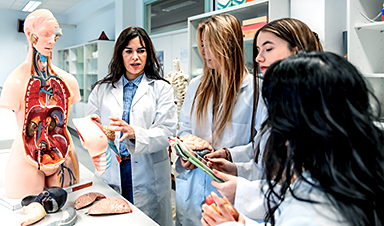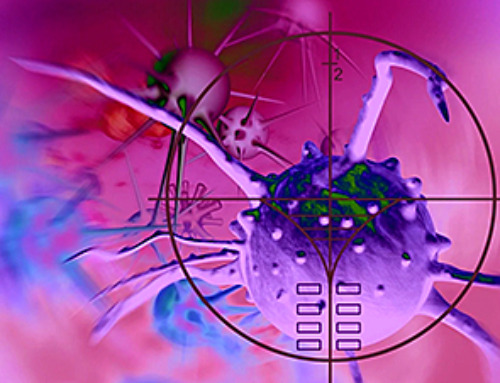For the first time, researchers have observed “quantum superchemistry” in the lab.
Long theorized but never before seen, quantum superchemistry is a phenomenon in which atoms or molecules in the same quantum state chemically react more rapidly than do atoms or molecules that are in different quantum states. A quantum state is a set of characteristics of a quantum particle, such as spin (angular momentum) or energy level. To observe this new super-charged chemistry, researchers had to coax not just atoms, but entire molecules, into the same quantum state. When they did, however, they saw that the chemical reactions occurred collectively, rather than individually. And the more atoms were involved, meaning the greater the density of the atoms, the quicker the chemical reactions went.
“What we saw lined up with the theoretical predictions,” Cheng Chin, a professor of physics at the University of Chicago who led the research, said in a statement. “This has been a scientific goal for 20 years, so it’s a very exciting era.”
The team reported their findings July 24 in the journal Nature Physics. They observed the quantum superchemistry in cesium atoms that paired up to form molecules. First, they cooled cesium gas to near absolute zero, the point at which all motion ceases. In this chilled state, they could ease each cesium atom into the same quantum state. They then altered the surrounding magnetic field to kick off the chemical bonding of the atoms.
These atoms reacted more quickly together to form two-atom cesium molecules than when the researchers conducted the experiment in normal, non-super-cooled gas. The resulting molecules also shared the same quantum state, at least over several milliseconds, after which the atoms and molecules start to decay, no longer oscillating together.
“With this technique, you can steer the molecules into an identical state,” Chin said.
The researchers found that though the end result of the reaction was a two-atom molecule, three atoms were actually involved, with a spare atom interacting with the two bonding atoms in a way that facilitated the reaction.
This could be useful for applications in quantum chemistry and quantum computing, as molecules in the same quantum state share physical and chemical properties. The experiments are part of the field of ultracold chemistry, which aims to gain incredibly detailed control over chemical reactions by taking advantage of the quantum interactions that occur in these cold states. Ultracold particles could be used as qubits, or the quantum bits that carry information in quantum computing, for example.
The study used only simple molecules, so the next goal is to attempt to create quantum superchemistry with more complex molecules, Chin said.
“How far we can push our understanding and our knowledge of quantum engineering, into more complicated molecules, is a major research direction in this scientific community,” he said.
News
Repurposed drugs could calm the immune system’s response to nanomedicine
An international study led by researchers at the University of Colorado Anschutz Medical Campus has identified a promising strategy to enhance the safety of nanomedicines, advanced therapies often used in cancer and vaccine treatments, [...]
Nano-Enhanced Hydrogel Strategies for Cartilage Repair
A recent article in Engineering describes the development of a protein-based nanocomposite hydrogel designed to deliver two therapeutic agents—dexamethasone (Dex) and kartogenin (KGN)—to support cartilage repair. The hydrogel is engineered to modulate immune responses and promote [...]
New Cancer Drug Blocks Tumors Without Debilitating Side Effects
A new drug targets RAS-PI3Kα pathways without harmful side effects. It was developed using high-performance computing and AI. A new cancer drug candidate, developed through a collaboration between Lawrence Livermore National Laboratory (LLNL), BridgeBio Oncology [...]
Scientists Are Pretty Close to Replicating the First Thing That Ever Lived
For 400 million years, a leading hypothesis claims, Earth was an “RNA World,” meaning that life must’ve first replicated from RNA before the arrival of proteins and DNA. Unfortunately, scientists have failed to find [...]
Why ‘Peniaphobia’ Is Exploding Among Young People (And Why We Should Be Concerned)
An insidious illness is taking hold among a growing proportion of young people. Little known to the general public, peniaphobia—the fear of becoming poor—is gaining ground among teens and young adults. Discover the causes [...]
Team finds flawed data in recent study relevant to coronavirus antiviral development
The COVID pandemic illustrated how urgently we need antiviral medications capable of treating coronavirus infections. To aid this effort, researchers quickly homed in on part of SARS-CoV-2's molecular structure known as the NiRAN domain—an [...]
Drug-Coated Neural Implants Reduce Immune Rejection
Summary: A new study shows that coating neural prosthetic implants with the anti-inflammatory drug dexamethasone helps reduce the body’s immune response and scar tissue formation. This strategy enhances the long-term performance and stability of electrodes [...]
Scientists discover cancer-fighting bacteria that ‘soak up’ forever chemicals in the body
A family of healthy bacteria may help 'soak up' toxic forever chemicals in the body, warding off their cancerous effects. Forever chemicals, also known as PFAS (per- and polyfluoroalkyl substances), are toxic chemicals that [...]
Johns Hopkins Researchers Uncover a New Way To Kill Cancer Cells
A new study reveals that blocking ribosomal RNA production rewires cancer cell behavior and could help treat genetically unstable tumors. Researchers at the Johns Hopkins Kimmel Cancer Center and the Department of Radiation Oncology and Molecular [...]
AI matches doctors in mapping lung tumors for radiation therapy
In radiation therapy, precision can save lives. Oncologists must carefully map the size and location of a tumor before delivering high-dose radiation to destroy cancer cells while sparing healthy tissue. But this process, called [...]
Scientists Finally “See” Key Protein That Controls Inflammation
Researchers used advanced microscopy to uncover important protein structures. For the first time, two important protein structures in the human body are being visualized, thanks in part to cutting-edge technology at the University of [...]
AI tool detects 9 types of dementia from a single brain scan
Mayo Clinic researchers have developed a new artificial intelligence (AI) tool that helps clinicians identify brain activity patterns linked to nine types of dementia, including Alzheimer's disease, using a single, widely available scan—a transformative [...]
Is plastic packaging putting more than just food on your plate?
New research reveals that common food packaging and utensils can shed microscopic plastics into our food, prompting urgent calls for stricter testing and updated regulations to protect public health. Beyond microplastics: The analysis intentionally [...]
Aging Spreads Through the Bloodstream
Summary: New research reveals that aging isn’t just a local cellular process—it can spread throughout the body via the bloodstream. A redox-sensitive protein called ReHMGB1, secreted by senescent cells, was found to trigger aging features [...]
AI and nanomedicine find rare biomarkers for prostrate cancer and atherosclerosis
Imagine a stadium packed with 75,000 fans, all wearing green and white jerseys—except one person in a solid green shirt. Finding that person would be tough. That's how hard it is for scientists to [...]
Are Pesticides Breeding the Next Pandemic? Experts Warn of Fungal Superbugs
Fungicides used in agriculture have been linked to an increase in resistance to antifungal drugs in both humans and animals. Fungal infections are on the rise, and two UC Davis infectious disease experts, Dr. George Thompson [...]





















